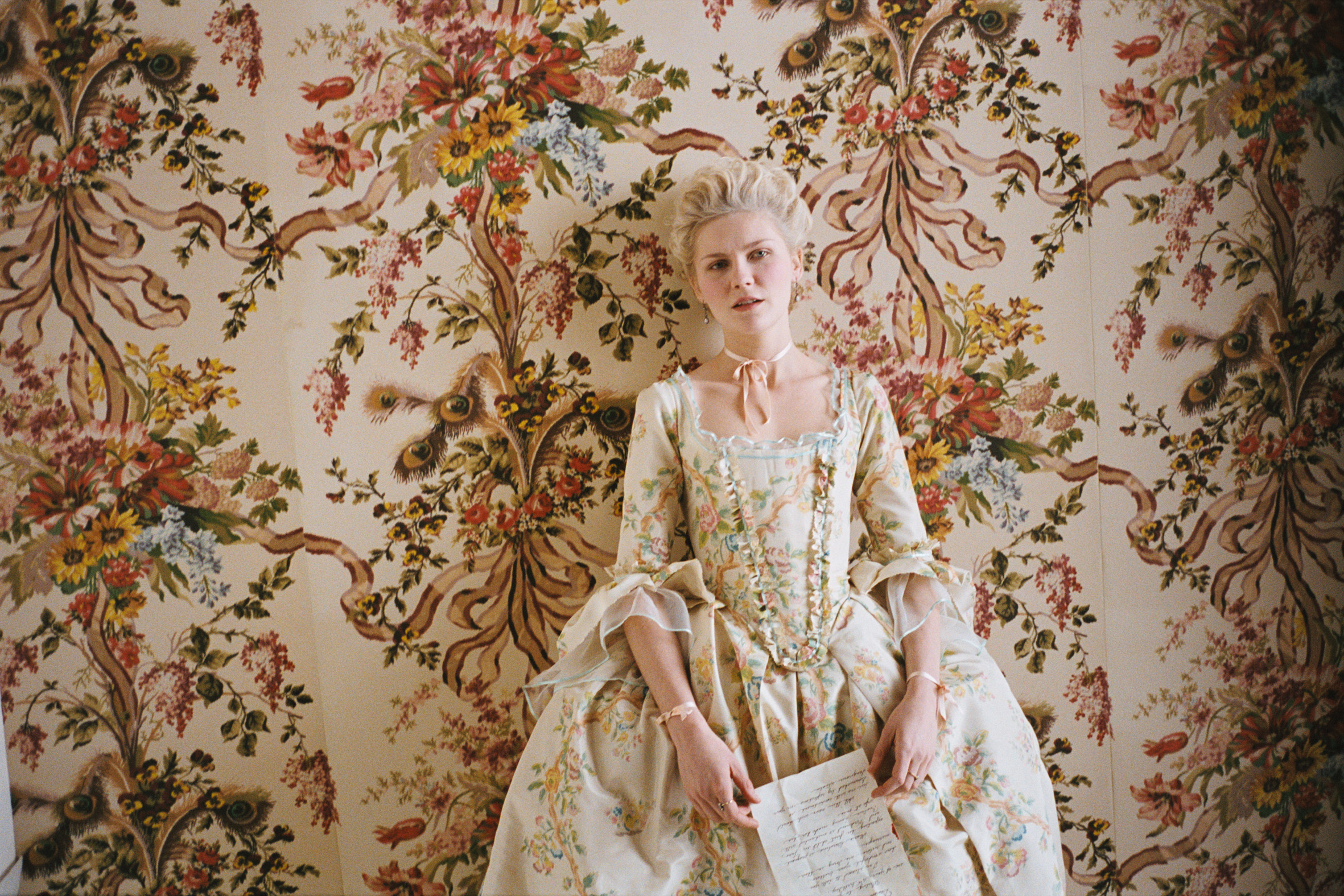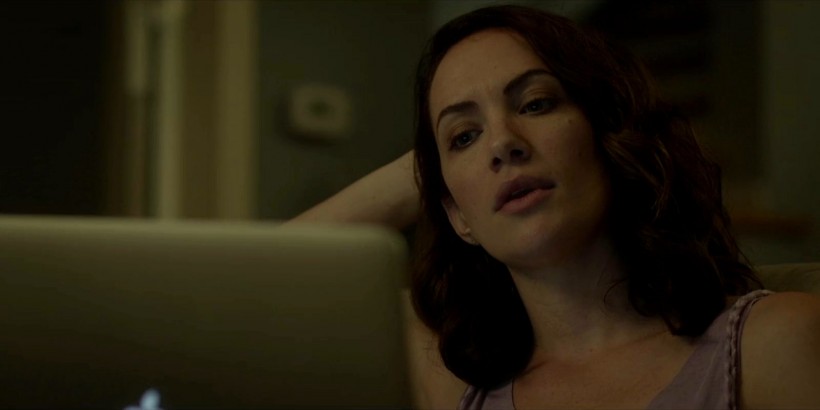10) Queen of Katwe Is a Gorgeous Inspiring Look at a Young Black Life Fully Realized by Candice Frederick
“Yes, it’s wholesome and finishes on a heartwarming high like many other cherished Disney stories. But at its core lies a story of redemption, cultural pride, feminism, and economics — elements of a young life contending with extraordinary challenges. […]
“Queen of Katwe is a mesmerizing story of a life fully realized, a life that’s often overlooked and not given a chance. Its young cast, led by Nalwanga’s nuanced performance, help illuminate layers of humanity resting deep in the ‘slums’ of Uganda, exhibiting talent well beyond their years. Meanwhile, Oyelowo and Nyong’o’s performances temper the film with heart-wrenching emotion. And Mira Nair’s touching portrait of Katwe’s inspiring young queen with a dream is one to remember.”
9) Céline Sciamma’s Films (Girlhood, Tomboy, and Water Lilies) Capture the Complexities of Adolescence by Charline Jao
“French director and screenwriter Céline Sciamma of Water Lilies, Tomboy, and Girlhood has gained critical acclaim for her portrayals of adolescence and coming-of-age, particularly on themes of gender and sexuality. Sciamma’s movies are intimate character studies, punctuated with dancing, tiny details embedded in body language, and a serious respect for younger viewers. For all the cringe-worthy or mediocre child acting that permeates film, Sciamma has a remarkable ability to draw out nuanced and organic performances in her works, oftentimes from non-actors.
“[…] The adolescent or teenager sits on the threshold of adulthood by sitting between child and adult, figuring out their rites of passage and space within society. This undefined, yet crucial space is an uncomfortable one and Sciamma’s films excel because they embrace the chaotic ambiguity of youthful liminality.”
8) Hush: A Resourceful Heroine with Disabilities for the Horror Genre by Cassandra A. Clarke
“What’s brilliant about Hush, written by Mike Flanagan and Kate Siegel (who stars as the lead), is it pushes the envelope of the survivor’s tale further through its main character, Madison ‘Maddie’ Young: a woman who is deaf, mute, and lives alone in a rural area. In addition to featuring a female protagonist with disabilities, Hush crafts a home-invasion story that isn’t about her ‘problems’ or obstacles or the attacker at all, but rather it focuses on the tactful solutions she chooses along the way.
“…Its depiction of Maddie as a full, engaging character who fends for herself and thrives alone is an asset to adding more characters with disabilities in films, especially horror, as not victims but stars.”
7) Gilmore Girls: Rory Gilmore Is an Entitled Millennial by Scarlett Harris
“That’s because she’s never had to hustle; everything has been handed to her. She only watched her mother struggle to raise her on her own, and even then it’s established that Lorelai went to great pains not to expose Rory to her struggles. […]
“To be fair, Rory is largely a product of her upbringing. Until the events of Gilmore Girls as we know it — Lorelai’s reconciliation with her rich parents so Rory can go to an expensive private school and then Yale — Rory was raised by an independent, struggling, small-town single mom. Whatever life lessons she learned there were swiftly erased by the ensuing plot developments: her rich grandparents and then her rich father paying for her education and European holidays, her rent-free accommodations, and breaks in school and work to ‘find herself’ similarly bankrolled by Richard (Edward Herrmann), Emily (Kelly Bishop), and Logan (Matt Czuchry). […]
“Despite her flaws, I relate to Rory because she displays all my — and my generation’s — worst characteristics.”

6) The Love That’s Really Real: American Psycho as Romantic Comedy by Caroline Madden
“A 2006 YouTube video created a parody trailer envisioning American Psycho (2000) as romantic comedy. While the stark juxtapositions between the classic boy-meets-girl formula and a horrifying portrait of a serial murder are amusing, the sentiments between them are not so far-fetched. Although primarily a horror film, American Psycho has a satiric backbone that appropriates codes from the romantic comedy genre to expose the absurdities of our gender ideals. Director and co-writer Mary Harron’s lens skewers the qualities we find appealing in romantic comedies as terrifying.
“Patrick Bateman (Christian Bale) is a concoction of the romantic comedy and drama archetype of ‘the bad boy.'”
5) The Revenant Should Be Left in the River to Drown by Celey Schumer
“Don’t believe the hype. You have been conned. The Revenant is a terrible film. […]
“This white-man-against-all-odds tale of revenge has been told so many times, even Michael Bay is probably like, “Eh, can’t we find something more original?” […]
“The second galling part of the film is its abhorrent treatment of Native peoples. It is at best mediocre, at worst condescending, and at all times unremarkable lazy recycled fodder. Almost every time Hugh has an interaction with a Native American person, they meet with disaster. Honestly, Chief Elk Dog (Duane Howard) and his men are the only ones operating with their own agency and justice in their quest to rescue his kidnapped daughter, Powaqa (Melaw Nakehk’o). But we hardly see them and are left to infer all of this information, until of course Hugh the White Man comes to Powaqa’s rescue. […]
“Can we see this whole movie from the Arikara tribe’s perspective? From Powaqa’s perspective? That would be an actual game changer.”
4) The Eyes of My Mother Is a Gorgeous Coming-of-Age Horror You’re Not Likely to Forget by Candice Frederick
“Oh, how I love this age we’re living in in which women characters on the big and small screens are allowed to be inappropriate, messy, b**chy, and sexual. It just further illuminates the myriad complexities women embody, painting a more thorough profile of inclusive feminism. But even while Hollywood has been consistently pushing these boundaries in more recent years, few films have explored morbid sensuality through the gaze of a woman better than writer/director Nicolas Pesce’s The Eyes of My Mother. […]
“…Pesce explores the nature of human instinct and arrested development in a way that is uncomfortable to watch yet immersive just the same.”
3) 20 Years of The Craft: Why We Needed More of Rochelle by Ashlee Blackwell
“I was flustered and empathetic to a character that was virtually invisible to an entire school population outside of her small coven of comrades, unless to be the unchecked target of racist scorn. This made her experience even that more isolating in contrast to her white female counterparts who, if they did get that brief seat at the table, were promptly dismissed for their class, burn scars, and not performing for the teenage ‘good ‘ol boys’ club. The most glaring difference; Rochelle was never going to get that seat. […]
“The movie for many sparked the thirst to explore the deep intersections of the weirdo. Rochelle was the social outcast with the other handful of social outcasts of St. Bernard Academy, sure. But how do we cinematize the Black girl outcast teenager that many of us felt like? That just so happens to be a practicing witch?
“Much of what can be read of Rochelle relies heavily on those of us whom she meant so much to. What kinds of conversations did young Black girls have back in 1996 and are having now about the importance of her presence in a film that at least, didn’t blend her in colorblind rhetoric? How did many of us find camaraderie, empathy, and imagination in Rochelle’s broader, unseen story?”
2) Caitlin Snow: It’s Time to Give The Flash’s Overlooked Heroine Her Due by Lacy Baugher
“Plus, the decision to continually depict Caitlin as afraid of herself and her abilities is unsettling. Women are almost always taught to fear their own power, instead of embracing it or attempting to understand it. It’s sad to see that pattern repeating on a show that has so few leading women in the first place.
“Caitlin’s journey – whether she ultimately keeps her powers or not – should be about figuring where she fits within Team Flash, within her family, and within her own idea of herself. We have seen Caitlin unnerved by the darkness inside her. She has issues with her mother and even occasionally with members of her own team. She’s certainly lost enough to want to burn the world down twice over. But she’s never really gotten the chance to deal with any of those issues on-screen in a significant way. This Killer Frost arc offers a perfect opportunity for her to finally do so. Caitlin’s journey shouldn’t be about whether she might turn into a monster, it should be about her becoming whole.”
1) Too Feminine, Too Pretty, and the Gendered Bias in the Critique of Sofia Coppola’s Films by Claire White
“However, while being one of the most discussed women directors, it is hard to think of a female director who is under as much scrutiny as Sofia Coppola. This is especially true when it comes to her signature pretty and feminine filmic style.
“When it comes to the critique of Sofia Coppola, her filmic style is too often described along the lines of being too pretty, too feminine, or as style over substance. …Male directors, however, who exhibit the same attention to style and aesthetics, are not held to this same ideal. As explored in Rosalind Galt’s book Pretty: Film and the Decorative Image, prettiness in film is not exclusively female or feminine, and is thus unfair to use as a critique against women directors’ films. […]
“There is a double standard in the way prettiness is regarded in cinema. ‘Pretty’ is for female directors, but for male directors, prettiness isn’t ever uttered, and reverence is received in its place.”












